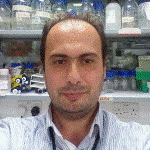Recent Advances in the Use of Ultrasound to Enhance Drug Delivery and Efficacy for the Treatment of Cancer
A special issue of Pharmaceutics (ISSN 1999-4923). This special issue belongs to the section "Drug Delivery and Controlled Release".
Deadline for manuscript submissions: 20 June 2024 | Viewed by 4673
Special Issue Editors
Interests: therapy ultrasound; thermal ablation; cavitation; ultrasound bio-effects; cancer research; vascular occlusion
Special Issues, Collections and Topics in MDPI journals
Interests: HIFU; histotripsy; therapy ultrasound; cancer treatment; ablation; biological effects; immunology
Special Issue Information
Dear Colleagues,
Therapeutic ultrasound is under investigation for the treatment of more than 150 indications, including tumors in prostate, breast, liver, pancreas, kidney, and other soft tissues. Significant research activity is being devoted to investigating ultrasound as a means of enhancing delivery and efficacy of drugs, biotherapeutics, and genetic material in these tumors. Sonication of tissues can induce local heating, or mechanical effects, resulting in the activation of drug delivery systems and the enhancement of drug concentration in the target tissue. It can also be used as an adjuvant to enhance the efficacy of chemotherapy, radiotherapy, and immunotherapy. There is growing interest in the use of low-intensity ultrasound in combination with microbubbles to open the blood–brain barrier and disrupt the tumor microenvironment, improving access to the interstitium of malignant lesions. This Special Issue aims to highlight and capture contemporary progress and the current landscape of preclinical and clinical applications of ultrasonic therapeutic agents and related drugs in the treatment of cancer. We are pleased to invite you to submit articles on all aspects of “The Use of Ultrasound to Enhance Drug Delivery and Efficacy in the Treatment of Cancer”.
In this Special Issue, original research articles and reviews are welcome. Research areas may include (but are not limited to) the following: ultrasound-based drug delivery; applications of ultrasound in cancer therapy and imaging; sonodynamic therapy; blood–brain barrier opening.
Prof. Dr. Gail Ter Haar
Dr. Petros Mouratidis
Dr. Ian Rivens
Guest Editors
Manuscript Submission Information
Manuscripts should be submitted online at www.mdpi.com by registering and logging in to this website. Once you are registered, click here to go to the submission form. Manuscripts can be submitted until the deadline. All submissions that pass pre-check are peer-reviewed. Accepted papers will be published continuously in the journal (as soon as accepted) and will be listed together on the special issue website. Research articles, review articles as well as short communications are invited. For planned papers, a title and short abstract (about 100 words) can be sent to the Editorial Office for announcement on this website.
Submitted manuscripts should not have been published previously, nor be under consideration for publication elsewhere (except conference proceedings papers). All manuscripts are thoroughly refereed through a single-blind peer-review process. A guide for authors and other relevant information for submission of manuscripts is available on the Instructions for Authors page. Pharmaceutics is an international peer-reviewed open access monthly journal published by MDPI.
Please visit the Instructions for Authors page before submitting a manuscript. The Article Processing Charge (APC) for publication in this open access journal is 2900 CHF (Swiss Francs). Submitted papers should be well formatted and use good English. Authors may use MDPI's English editing service prior to publication or during author revisions.
Keywords
- therapy ultrasound
- HIFU
- drug delivery
- sonodynamic therapy
- cancer treatment
- histotripsy
- hyperthermia
- thermal ablation
- cavitation
- blood–brain barrier








